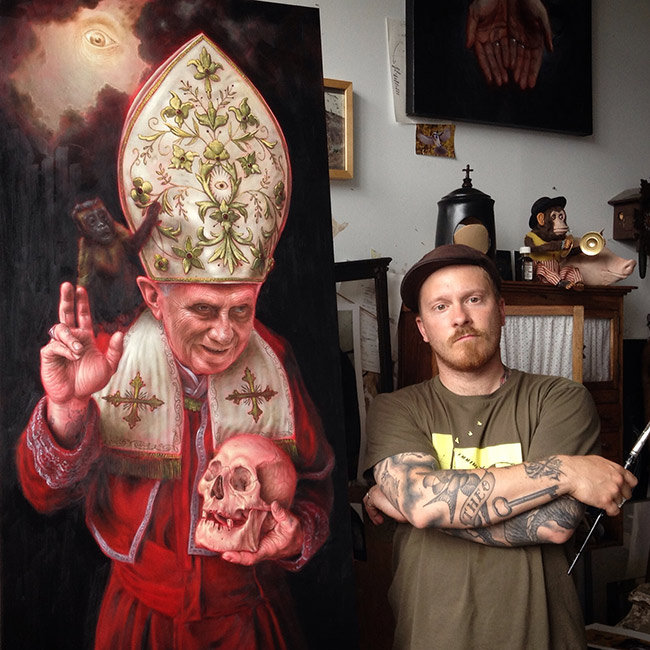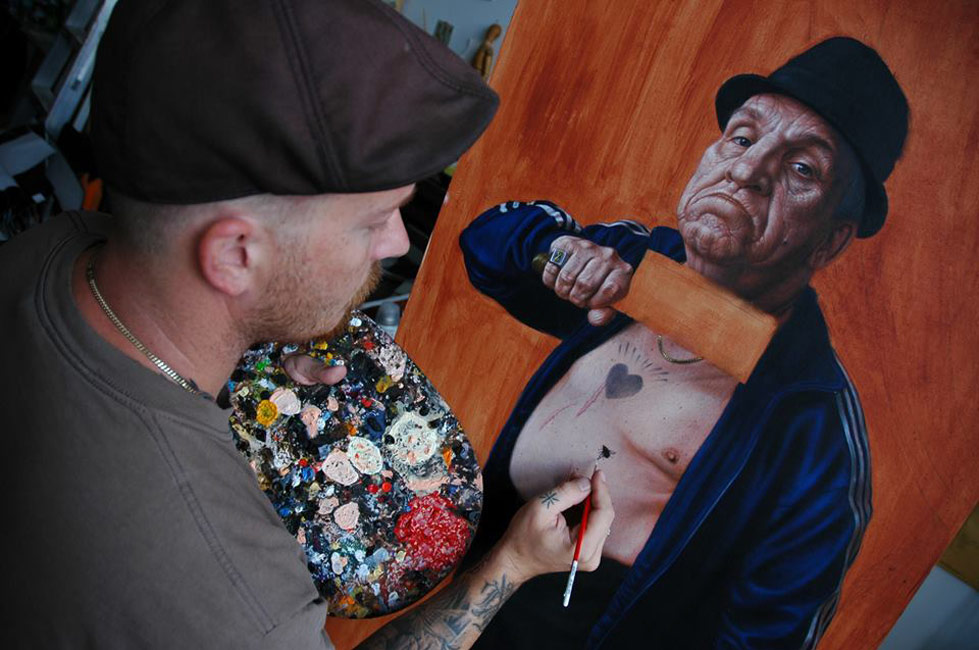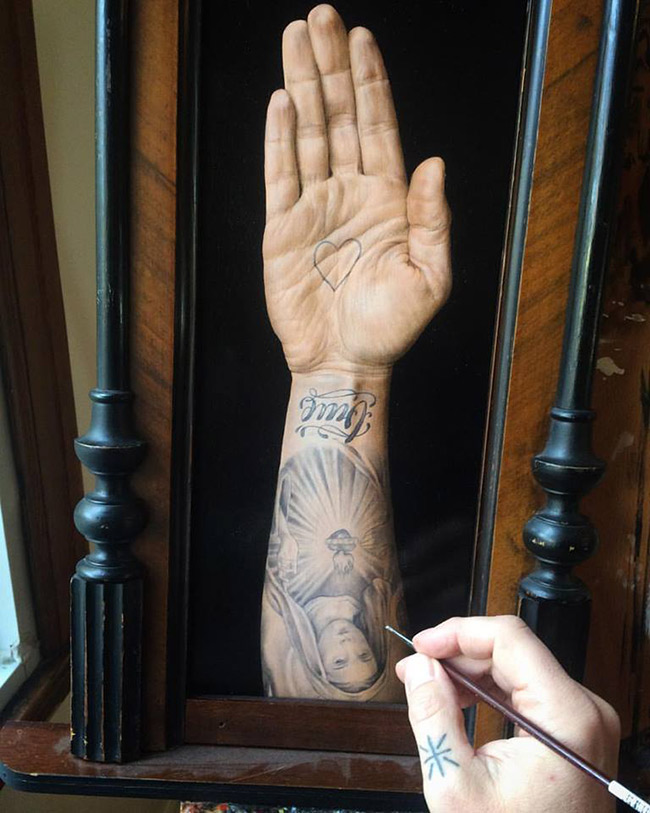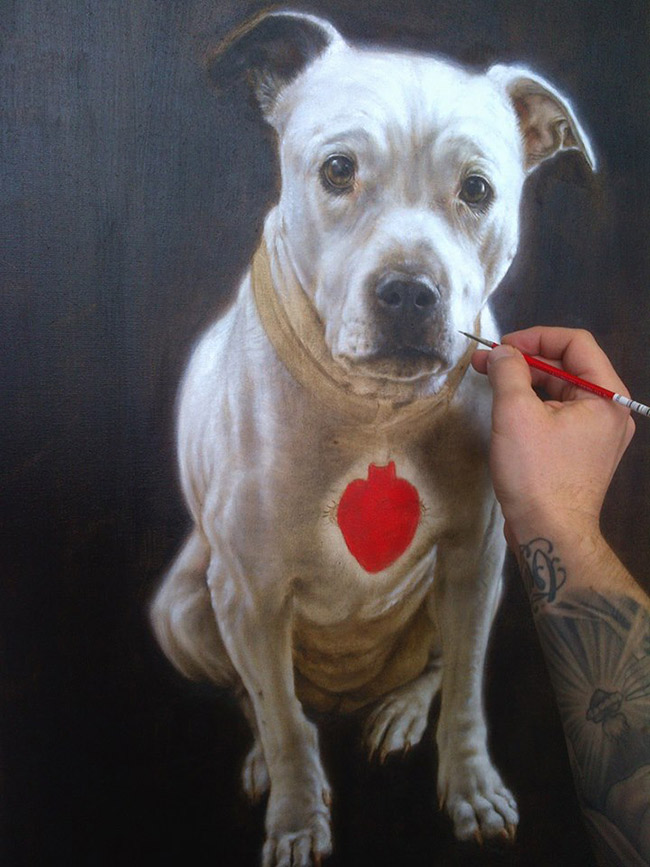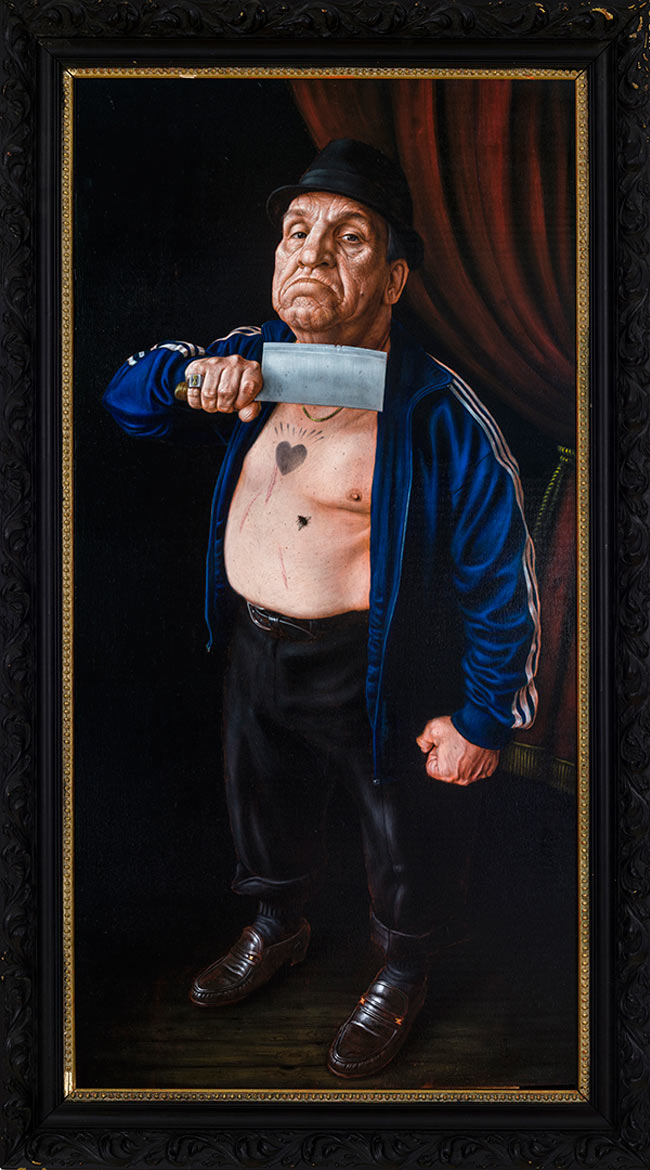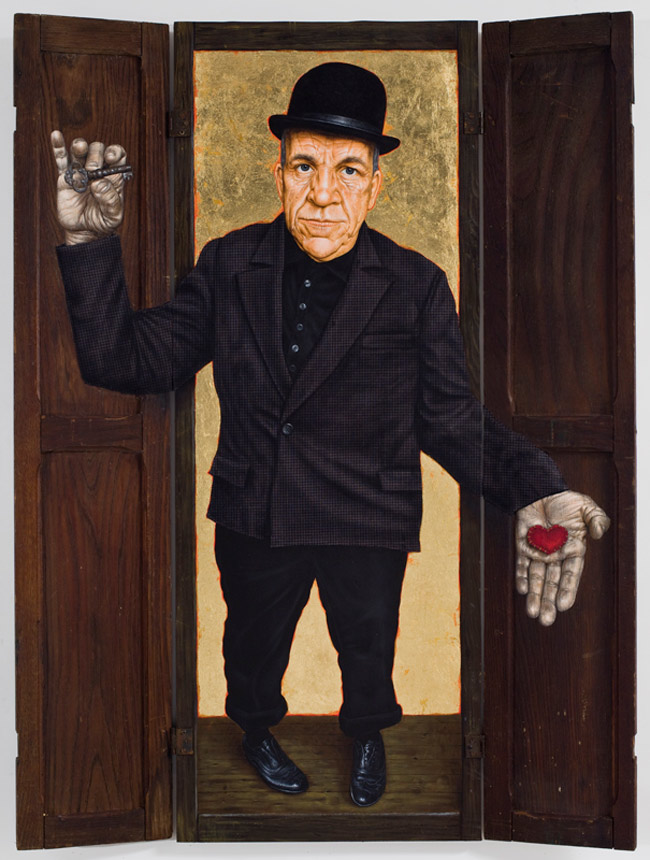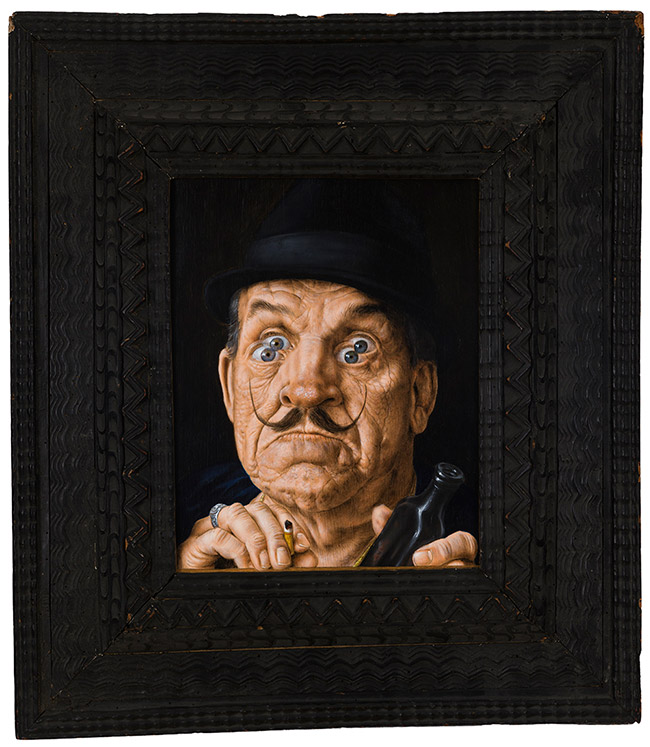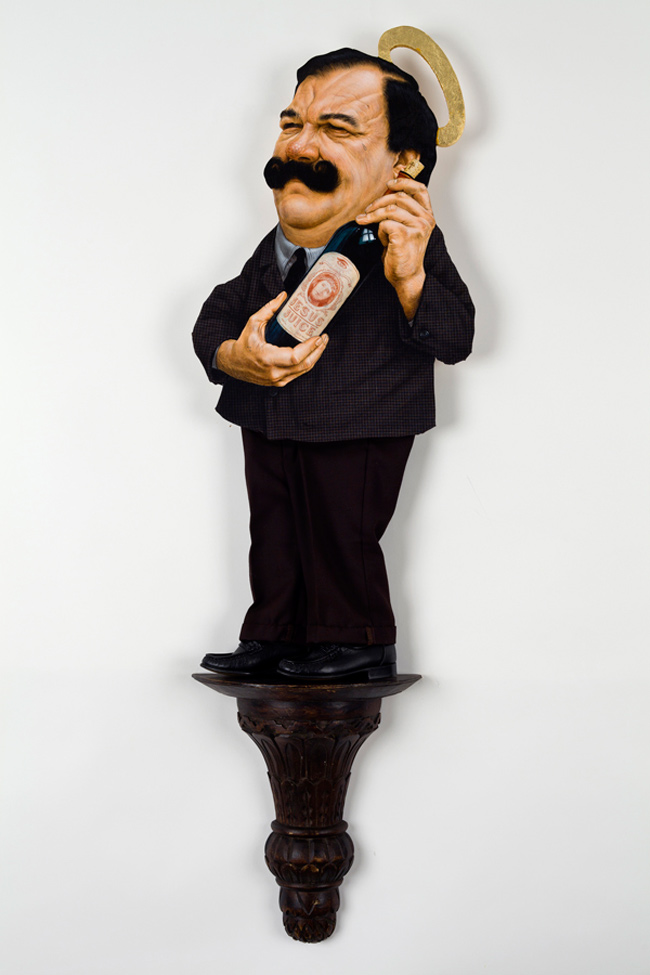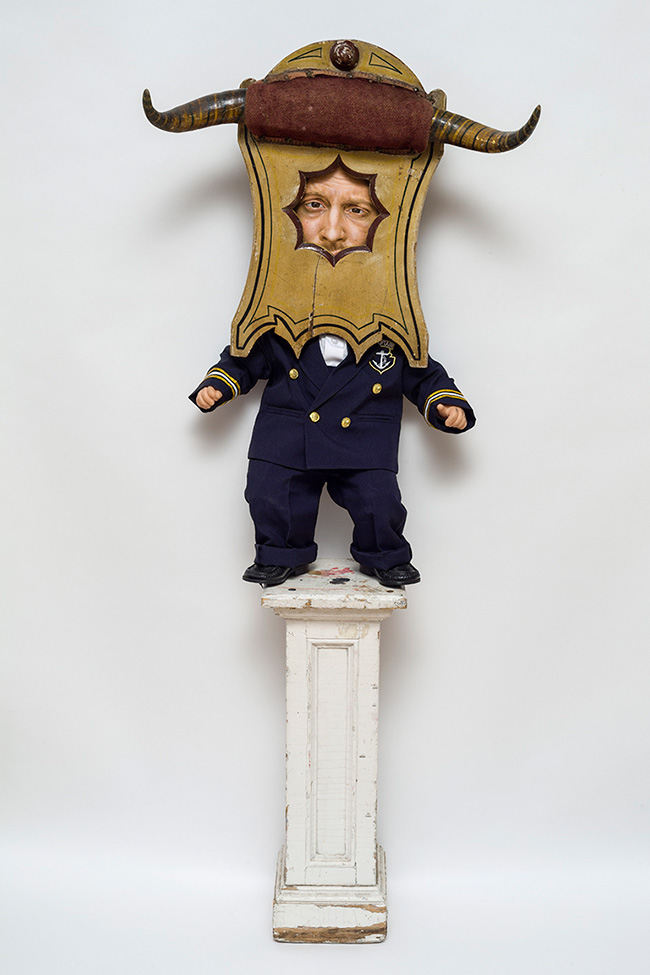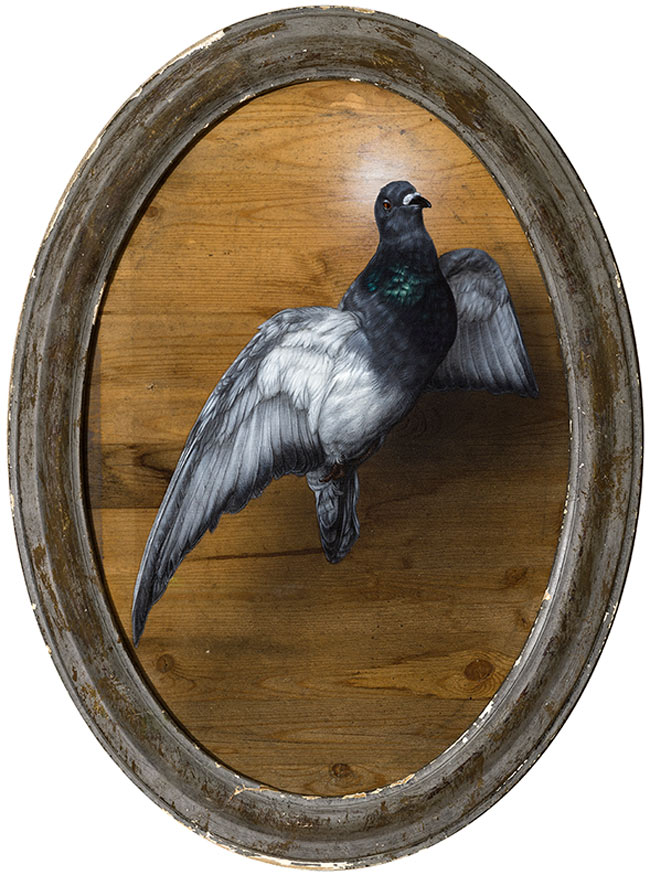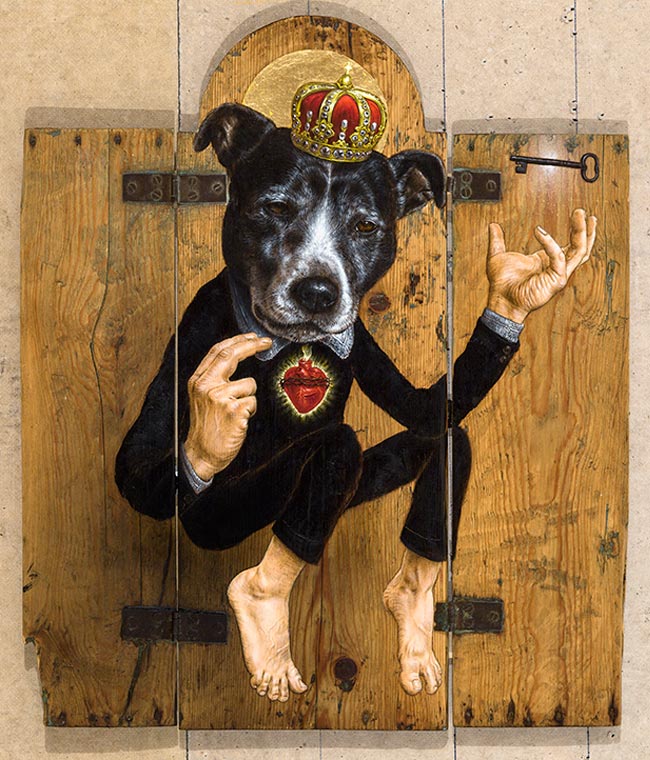The appearance of Jean Labourdette’s art studio is the quintessence of what most people will bring to mind if asked to imagine a fine artist’s work space. A collector of mysterious antiques and object d’art from times gone by, Jean cocoons himself within history, attentively listening to the whispers from the past, which help him navigate his way through creation. Infusing his imagery with inspirations derived from Russian iconography, carnival sideshows, Victorian curiosities and an assortment of living and dead creatures, the often distorted stylisation of Jean’s subject matter is presented with a surreal and technically breathtaking finesse, which cleverly merges fiction with reality. Swirling around within his thematic melting pot are symbolic suggestions and signifiers pertaining to his fascination with opposites and we are invited along on an exploration of their integral relationships to life and how these relate to our conceptual understanding of it.
Jean Labourdette was born in 1976 in Paris, France. In 2001, he moved to Montréal, Québéc, Canada, where he is currently based. Jean is self-taught and gives credit to the years he spent as a graffiti artist in Paris in the late 80’s and early 90’s (under the name Turf One), for the development of his drawing and his understanding of colour theory and composition. For years Jean was working as a multi- disciplinarian, creating as an illustrator, comic artist and filmmaker. In 2004 he decided to focus all his attentions on his fine art, which has since gone from strength to strength. Jean’s artwork has been exhibited in galleries around the world, including many prominent New Contemporary purveyors, including, Jonathan Levine Gallery, Yves Laroche Gallery, Thinkspace Gallery and BeinArt Gallery.
WOW x WOW is honoured to bring you the following exclusive interview with Jean, in which he discusses many of his gradually evolving inspirations and motivations. Read on!
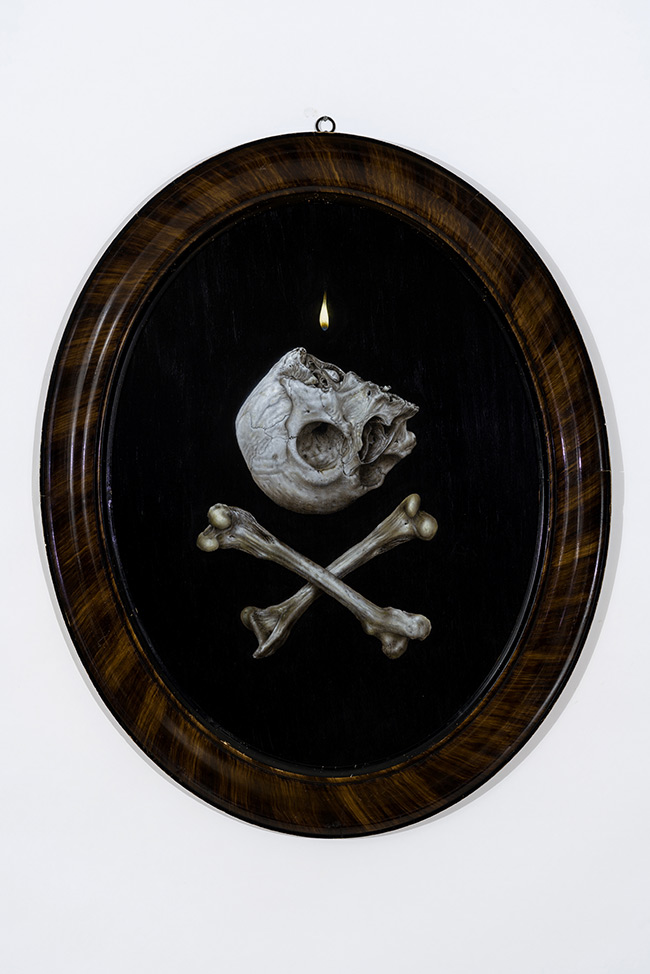
Hi Jean! First of all, thanks for agreeing to free up some of your valuable time in order to have this wee chat, we really appreciate it. If you could please start us off by introducing yourself and talking about your background, touching on anything you feel has been relevant to shaping Jean Labourdette the artist?
I grew up in Malakoff, a suburb of Paris. My father was an artist, so I was surrounded by art from a very early age. My parents gave me amazing children’s books, so strong visual images naturally became a second language for me. I was encouraged to create and paint, but never forced to, so drawing and painting have always been a space of freedom for me. I started doing graffiti in the late eighties and this was when I started getting more seriously involved with my art. I never went to art school and am pretty much self-taught.
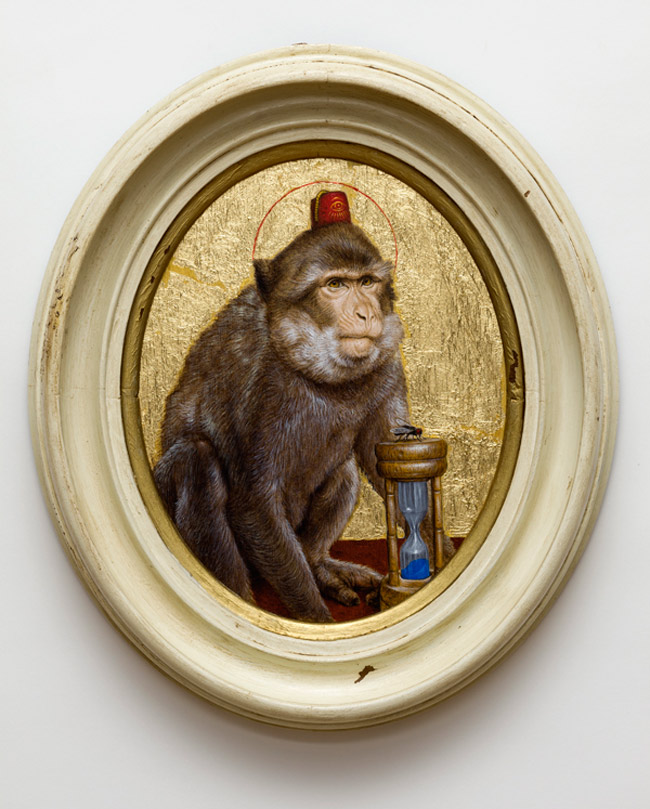
We’re interested to hear about where you’re currently living and what you like about the area? What is the art scene like there and do you feel a part of that community? Are these aspects of your existence that are important to your creativity?
I live in Montreal. I moved there from Paris 15 years ago. It is a cool city on many levels and with a great art scene. That being said, I find myself pretty secluded as I am always very busy with work and don’t go out as much as I used to. Over the years my sources of inspiration have gradually evolved and shifted and I feel that I would eventually benefit more from living in nature, than in a city in an urban environment.
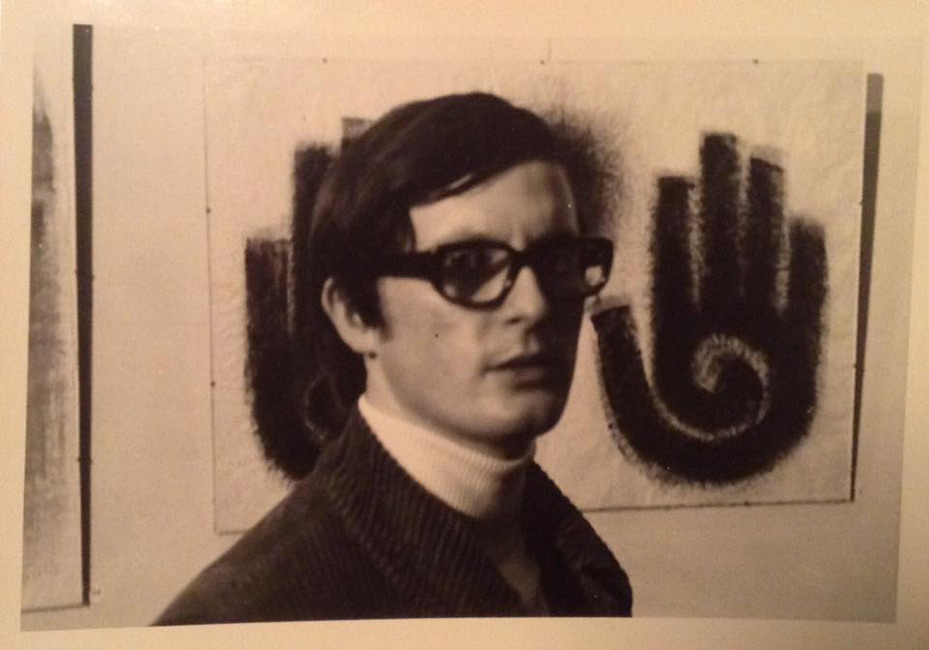
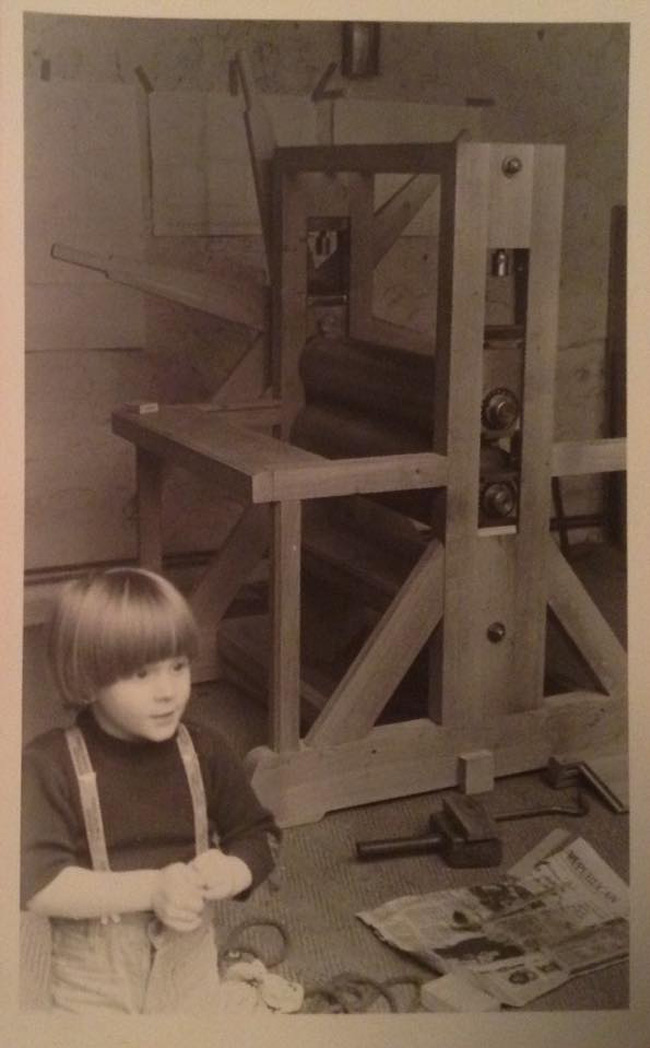
In what ways did your childhood and upbringing affect your relationship with the arts?
As I said, my dad was an artist so art was always part of my life. My parents were also both Jungian analysts, and I believe I picked up a passion for exploring the subconscious from them. There is one more thing I picked up from my childhood and relationship with my parents; as a kid, I used to go with my dad to flea markets a lot and loved it.
Then as a teenager, throughout the nineties, I used to go into abandoned buildings and paint graffiti; life-size characters inspired by each building and interacting with the architecture and the space. Today, through the use of found objects and antiques in my work, I keep ‘time-traveling’ and further exploring this path I discovered as a kid through my dad.
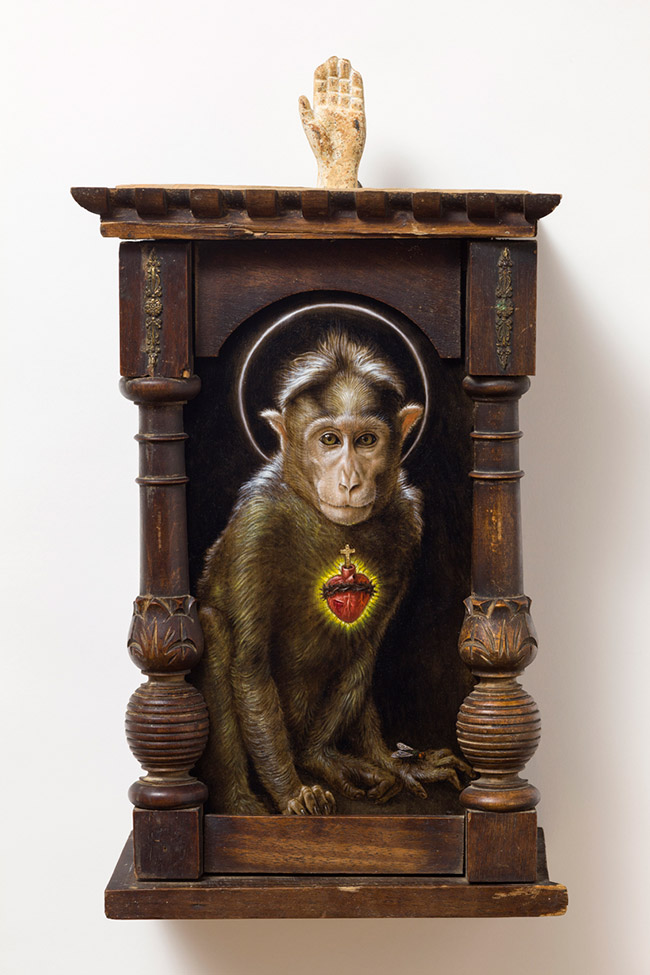
Talk to us about the narratives you base your imagery upon. Do you consider your work to be autobiographical in nature or do your inspirations originate from broader global issues or more general themes about life and existence?
I really like to explore my subconscious, more as dreamer than an analyst. I try to let the images emerge from it as freely as can be, and capture the ones which mesmerize me the most to turn them into a painting or a sculpture, give them a physical form. A lot of my work is probably autobiographical in a way, but not necessarily in a literal or rational way. I know that a key notion in my work is the dynamic of opposites, revealing beauty through ugliness, light through darkness, and so on. I also naturally use a lot of symbols and visual archetypes in my work. Another primary concept is the fact that I am obsessed with bringing my characters to life. I almost see myself as a taxidermist specializing in midgets and freaks! (laughs)
I think one of my strongest influences was the movie ‘Who Framed Roger Rabbit’, in the sense that I was blown away by the idea that cartoon characters could actually exist and live alongside humans in the real world, blurring the line between fiction and reality. This definitely became a key notion in my work and still is today. Bringing to life fictional surreal characters often bearing almost ‘cartoony’ physical disproportions and making them part of ‘our world’ became the core of my work.
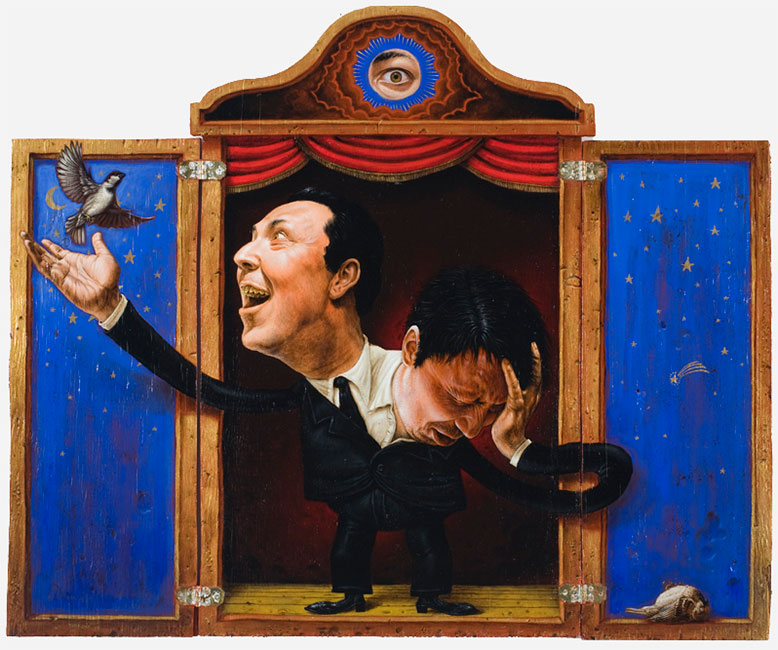
It appears that you have a strong passion for the past. Your visual aesthetic is heavily influenced by bygone eras and the artefacts and aged relics that you paint on cleverly enhances these connections. Please give a sense of what it is that fascinates you the most about what has gone before.
I like to go to flea markets, obscure little antique shop. Everywhere I go, I always keep an eye out for inspiring objects I could use for my work. It gives me a good excuse to collect antiques (laughs)! I like to get inspired by the ‘soul’ of objects, let them ‘tell’ me how to use them, what to paint on them. It becomes almost a dialogue.
I think it is also a way for me to transcend the notion of time and death; to time-travel; to connect the past and the present. By using objects from the past to create something today that will still probably exist after I am gone, I am sort of turning past, present and future into one. while working on the piece, tapping into the uninterrupted energy-flow that is life, connecting the dots.
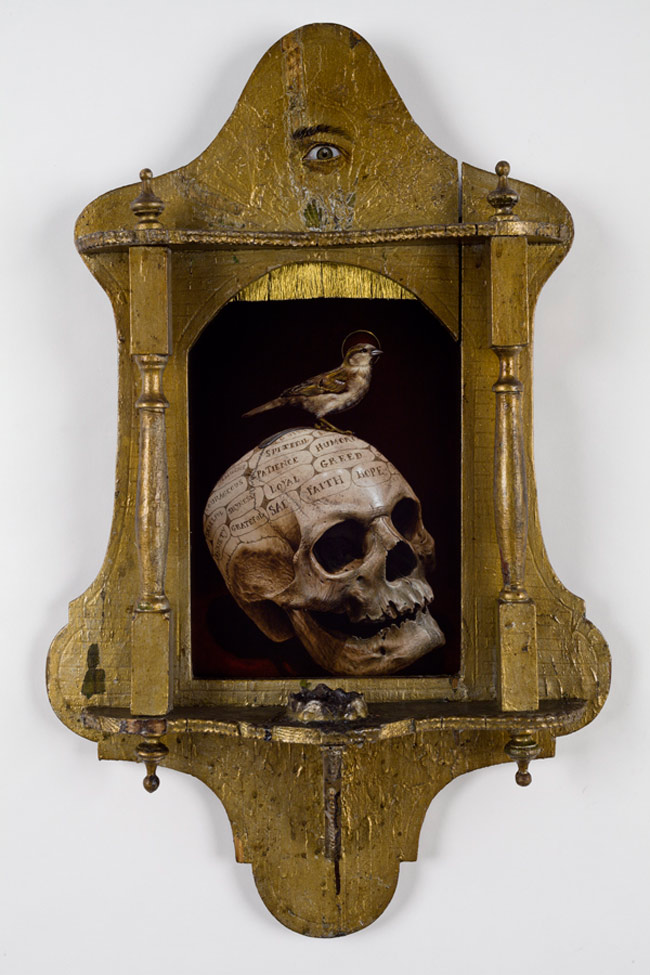
You have a serious interest in animal rights and were recently inspired to paint a mural in Montreal in protest of a proposed pit bull terrier ban in the city. Can you give us some background and insight into the situation, the piece you painted and how things have been progressing surrounding the ban?
It’s always the same bullshit phenomenon. It’s sad to see that pit bull type dogs are being targeted once again and used as scapegoats by fear mongering politicians and media to achieve their own agendas, control populations with fear, distract them from the real issues and gain votes all at the same time… revolting. Every single expert in the field is against it. Everywhere that breed-specific legislation has been in place, it has proven to be a total failure at reducing the amount or severity of dogs bite; yet governments still push that bullshit on their citizens, mass-sentencing individual beings to death simply based on the way they look, and tearing families apart!
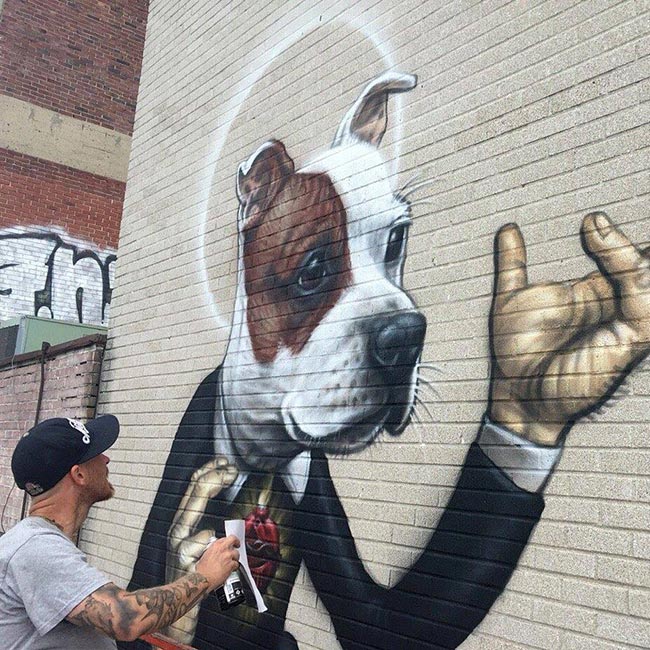
The only thing BSL achieves is marginalizing responsible dog owners and murdering family dogs for no reason. A dog is a dog, and a ‘pit bull’ type dog is no exception. The only way to reduce dog bites and improve public security is by responsibilizing dog owners of all breeds and through education. It is the only thing that actually works. They established a bylaw based on these key notions in the city of Calgary and had amazing results. Racism and ostracization never pays off, neither does going against science and facts. Montreal’s mayor Denis Coderre doesn’t care about public safety. A woman was mauled by a dog in June. The dog was never identified as being a pit bull but the press (notably the newspaper La Presse) referred to it as such from the beginning and created a wave of panic, capitalizing on it.
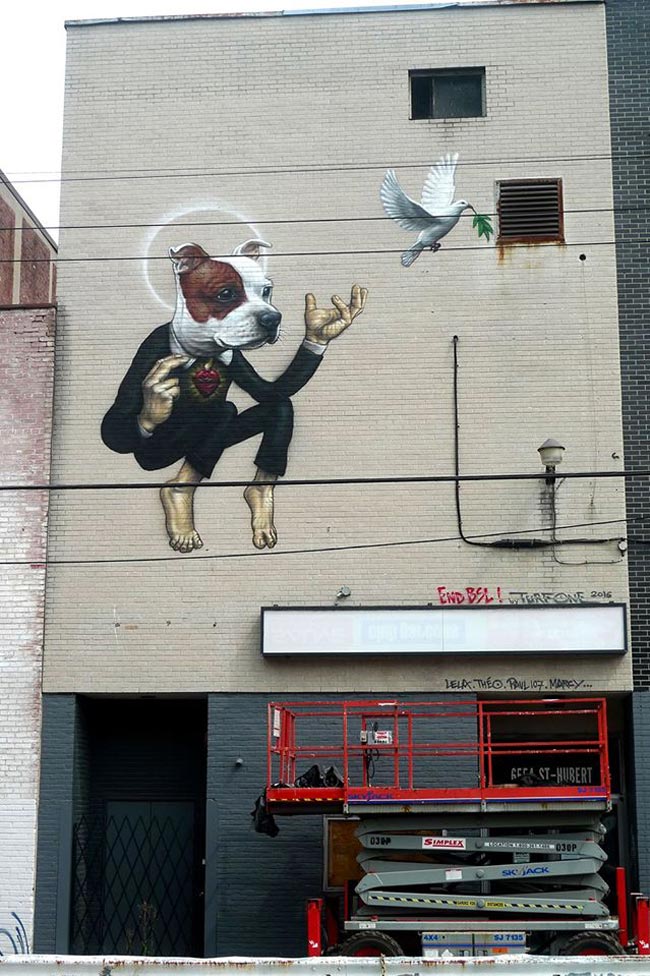
The dog actually happened to be a Boxer mutt, but the city keeps pushing a pit bull ban against all logic and against the advice of every single expert, ignoring both science and facts. There is a reason for that. The dog was abused by its owner, hadn’t been fed in week at the time of the attack. Its owner used to hit it daily, which had been reported to the city. The dog actually had bitten people twice and complaints had been made to the city, but they didn’t do anything! According to the existing Dangerous Dog bylaw already in place, the dog should have been removed / assessed then, and possibly put down. If the city had done its job, this poor woman would probably still be alive today. So really, they are dodging the bullet by deferring the blame, while making it look like they are coming down strong to solve the problem of dangerous dogs by creating a paranoia of pit bulls instead of taking real measures to address the real issue, knowing very well that this will not change a thing!
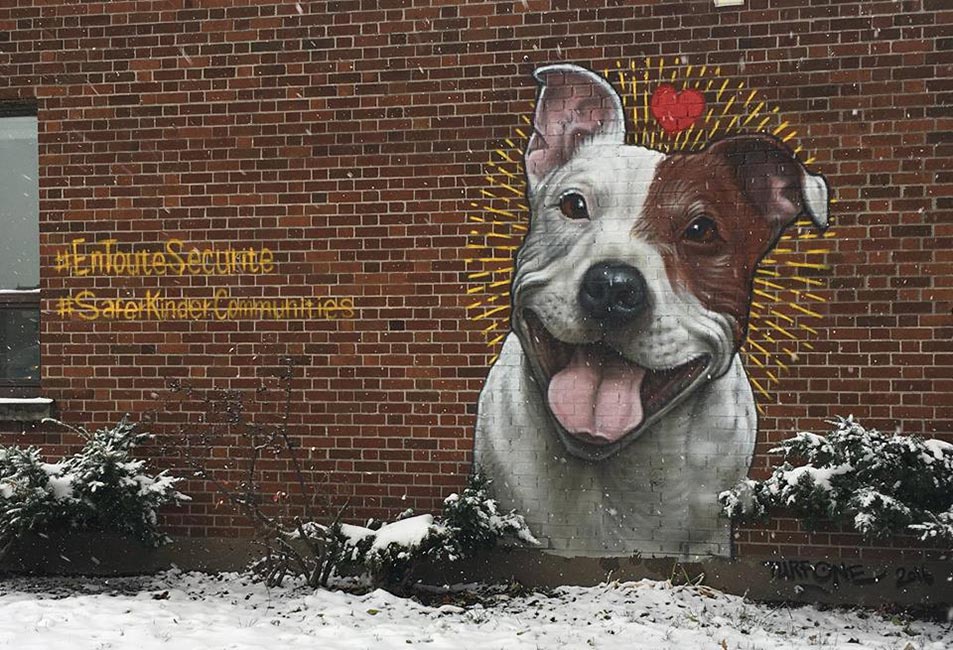
I got really involved on this over the summer and fall, doing t-shirts benefiting the SPCA, raising awareness, going to speak at City and Borough Councils, as well as doing a couple of murals on the subject. The Montreal SPCA has taken the City to court and we’re waiting to see what will come out of this. They have been amazing through it all and I urge you to support them and the real solutions they are bringing to the table.
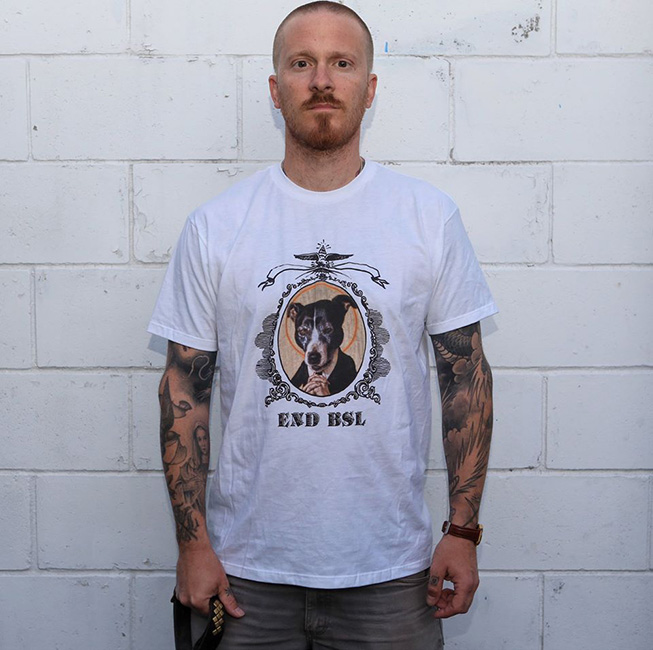
In recent years you have invested some of your time and skills into developing yourself as a tattoo artist. Tell us about your relationship with the art of tattooing, how you got yourself started and the most important similarities/differences you consider the discipline to have to painting. Are there any benefits or lessons that you’ve taken from the tattoo studio into your painting studio?
I have been fascinated by tattoos since a very, very early age. There is something magical about making images a part of you, being able to give them life through sharing your flesh with them.
For me, tattoos are my diary in a way. They are time-capsules that bring me back to specific key moments in my life when I look at them, specific people, specific memories.
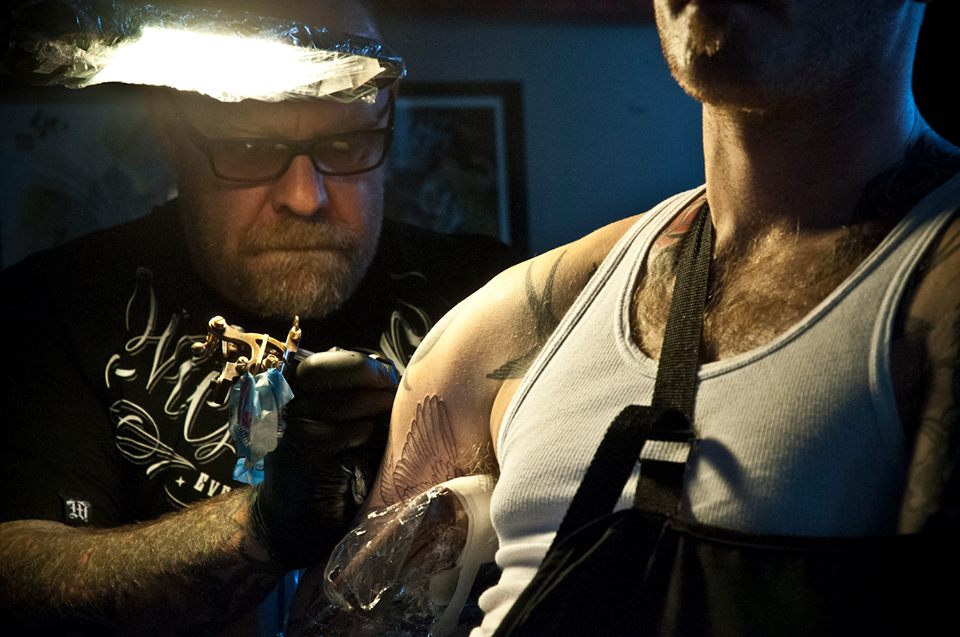
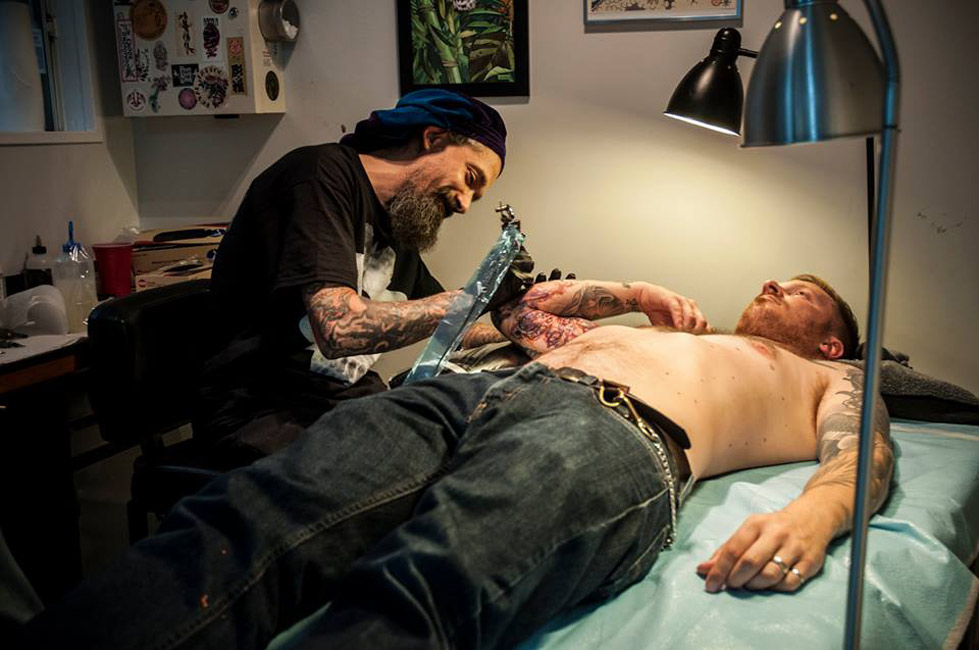
My tattoos are also my own personal art collection! I have tattoos by amazing artists and great friends such as Tin-Tin and Filip Leu; artists whose work has been an inspiration for me for over 20 years!
I tried tattooing for about 6 months but having joints and tendon problems in my hands, I was unable to continue.
If anything, tattooing taught me to be more efficient in my work as a painter, to stop over-questioning and analysing everything I do, and to trust my instincts more.
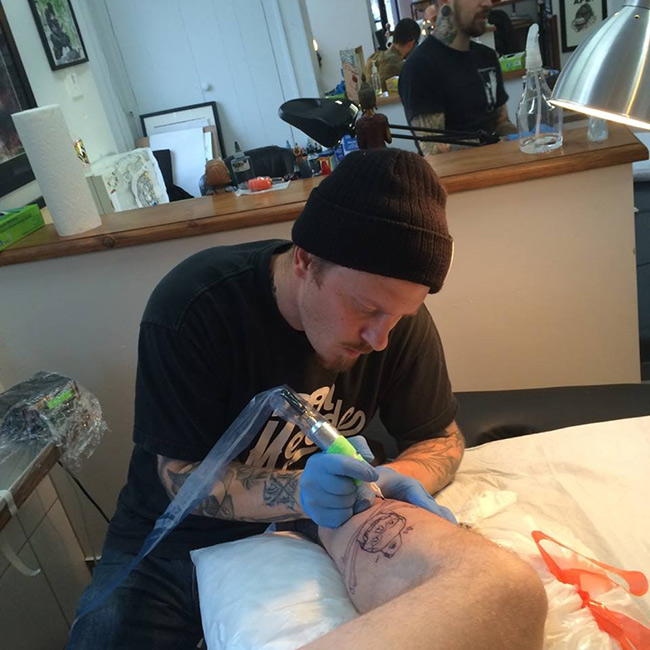
What do you feel is the most essential factor an artist must be open to, regarding the evolution of their practice? Having had a lengthy and successful career so far, how have you seen your own work evolve over time?
Being open to change is the key! If you stick to the same formula over and over, you’re trapped, you’re dead!
I don’t mean that you have to re-invent your whole language every year, change how you paint. It’s not a question of ‘style’ but rather of content. I think as an artist you shouldn’t be afraid to let your evolution as a human being reflect itself in your work as an artist, hence making it evolve and change over time. It’s a question of honesty. If your work doesn’t reflect who you are anymore, it becomes a lie, becomes empty, contrived and meaningless and it shows!
My work goes through phases, darker ones, lighter ones, serious ones, funnier ones… It reflects what I go through in life. Of course, some pieces are more inspired than others, more ‘in-tune’ than others, but this is also part of life, we are slightly different every day.
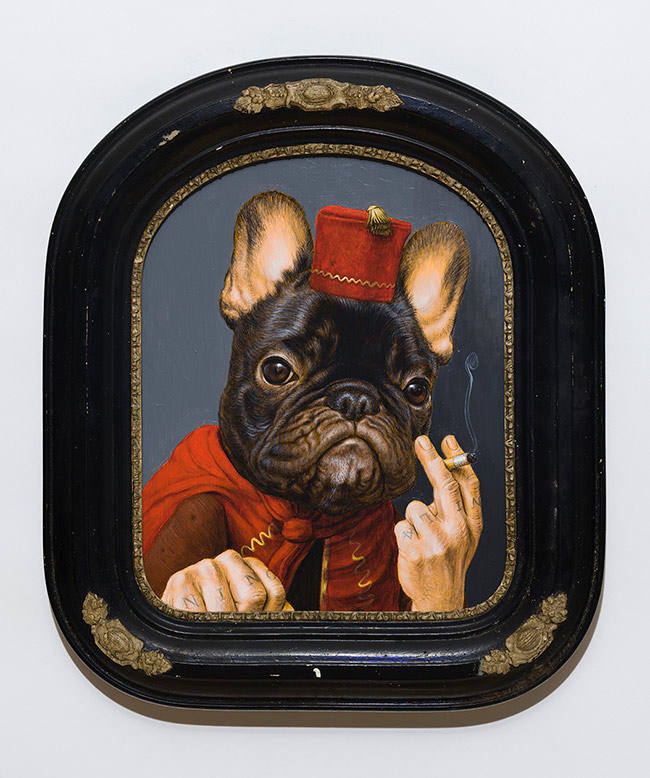
What are your opinions about beauty in reference to man-made artefacts? Is beauty something that you search for in art and is it something you consider when producing your own work?
Well, I don’t really like the notion of beauty, as I find it very subjective. Some things people will find absolutely repulsive will be the most attractive and beautiful objects to me, and vice-versa. I also find that beauty is better revealed by what most people perceive as ugliness, decay, etc.
But yeah, I guess I look for ‘beauty’ in my work in the sense that I try to create images or objects that will have some of the mesmerizing qualities that the images or dreams that compelled me to create these paintings had in the first place when they emerged from my subconscious! To me it is more about emotion than beauty from a purely aesthetic point of view.
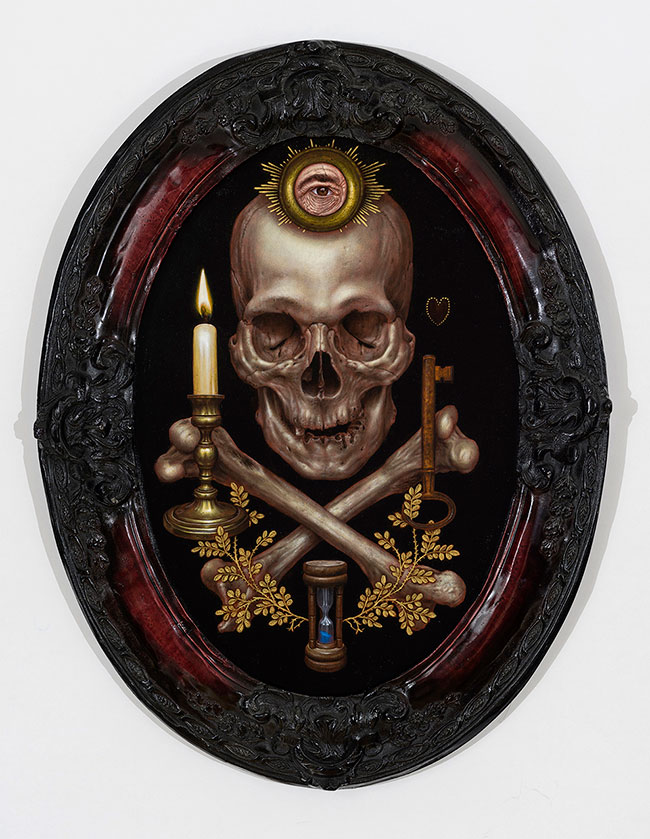
In order to get a better understanding of the personality of an artist, it can help to get a peek behind the curtain. Would you be willing to share a story from your own life, possibly one whose memory you find yourself returning to for inspiration, or maybe just a tale about a hardship you’ve overcome which has helped define the person and therefore artist that you are now?
I lost both my parents fairly young and I’m sure my approach to creation and art is for me a way to go back and travel to a time that’s even before them, and by doing so, turning an energy that’s supposed to be past and dead into a creative act that’s happening in the present, for the future.
I think a lot of my work questions the boundaries between life and death, trying to overcome the notion of death perceived as an ending of life.
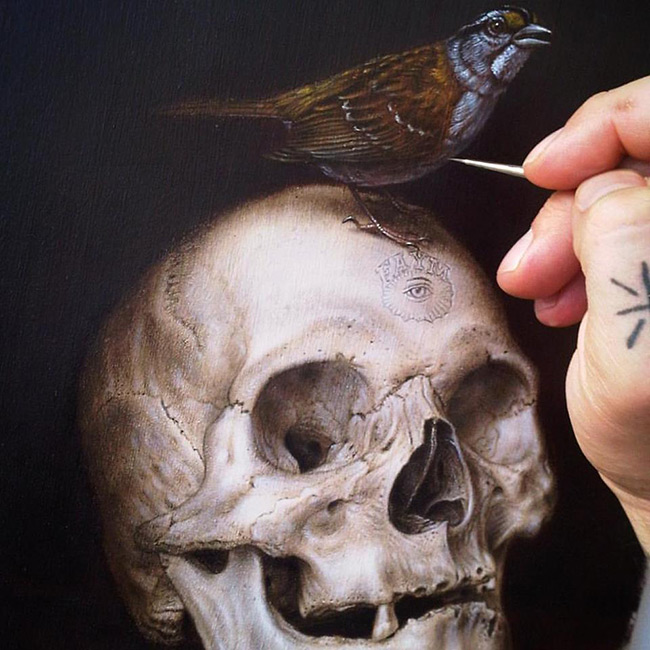
What do you consider to be your primary motivation to get up each day and create?
That’s the only thing I know how to do!! (laughs)
It is a need for me, this is how I express myself best as a human being. I also believe that in this day and age, humanity needs imagination and creation more than ever to counterbalance the triviality of the shit show that’s been going on in the world. Art connects us to the sacred aspect of life to a certain extent, and hopefully this can contribute to inspire us as individuals, as a society and as a species to act in a more aware and respectful way towards Life in our everyday actions, to be more appreciative of its beauty, more receptive to it, and therefore to act accordingly. Albert Einstein said: “Imagination is more important than knowledge. For knowledge is limited, whereas imagination embraces the entire world, stimulating progress, giving birth to evolution.”
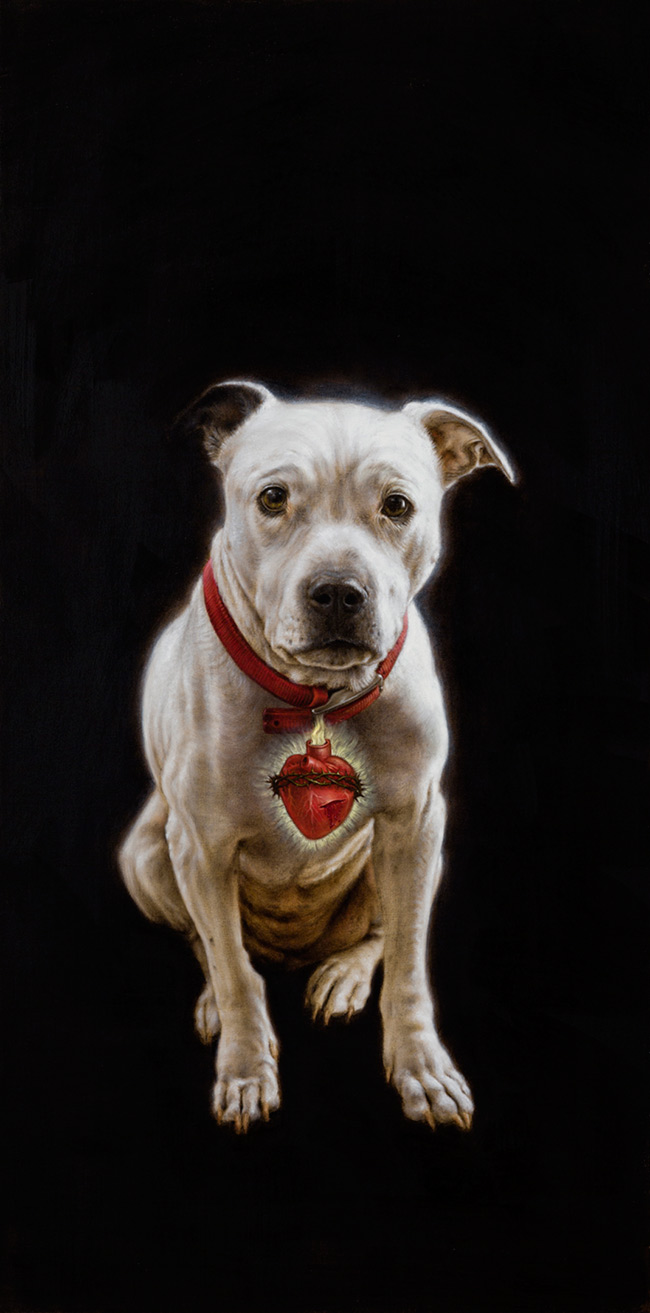
If you could own one piece of art from any of the world’s collections what would it be and why?
A self-portrait by Rembrandt. Rembrandt is a magician for me, he was able to capture the essence, the soul of his subjects. His portraits still hold life, which has traveled through time.
What’s next for Jean Labourdette?
Keep painting, of course… I’d also like to further explore the medium of film, and animation as well. Puppetry, stop-motion animation…
